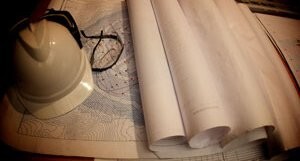Technical reports are vital to the continuous improvement efforts of any manufacturing organisation. However, the task of preparing these reports often fall into the hands of employees who would much rather be doing the work rather than writing about it. Hence, these reports are often inadequate, unfit for purpose, or worse, misleading.
Here are three tips to keep in mind when writing such reports:
A – Analysis
Technical workers such as engineers often find themselves solving urgent problems or emergency situations with a temporary approach, i.e. fixing the symptoms instead of the root cause. Naturally, these problems crop up again after some time has passed. These ‘fire-fighting’ reports then pile up, with all of them having the same, misdiagnosed answer. Instead of finishing the report and swiftly moving on to the next task, these employees should be encouraged to look at themselves as problem solvers, not just fire-fighters or report writers. This approach, coupled with more patience from management will yield fruitful results in the long term. Furthermore, the technical reports produced will possess added value beyond solving the immediate problem at hand. The analysis can now be used as research material in the future, either to solve similar problems or to bring about strategic expansion and development projects.
B – Brevity
The use of short sentences contributes greatly to the comprehension of a technical report. Most readers will not be reading your text word for word – they will be skimming through to find what they need. Upon reaching the desired section, they will then start to slow down to try and capture the information required. This is where they will appreciate sentences that are concise yet enlightening. Of course, a long (i.e. 30 words or more) sentence thrown in every now and then does no great harm; in fact, you can get away with extremely long sentences such as this one – 54 words according to my word processor – by clever use of punctuation marks that helpfully break the constant flow of words.
C – Clarity
Avoid words using language that can bring doubt to your findings, especially in the Results, Discussion and Conclusion sections. Words like ‘basically’, ‘could’ and ‘maybe’ have no place in sections where you are supposed to be showing concrete solutions. If answers are indefinite, this simply means not enough experimenting or thinking has been done. The use of precise, unambiguous words backed by evidence-based data reflects well on the maturity of the writer. In addition, these words transmit the confidence of the writer to the reader, who will be more willing to buy into the proposal, suggestion or solution offered.
——————–
Without doubt, there are many more tips that can add value towards the formation of technical reports that convey a sense of the writer’s professionalism. Nevertheless, focusing on these guidelines would be an ideal start. The ABC’s mentioned above will surely lead to greater understanding – not to mention gratitude of report readers who will be thankful to avoid reading yet another long-winded, complicated report peppered with ‘technical-speak’, that ultimately leads to nowhere. Happy writing!






